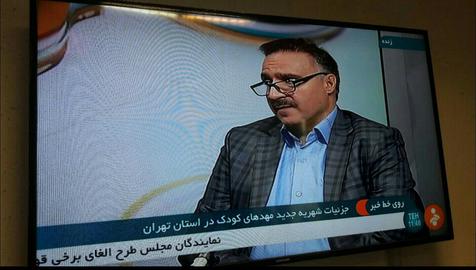On the afternoon of Wednesday, June 7, Iranians began to hear news of two terrorist attacks in Tehran, one in which group of shooters attacked Iran’s parliament and another in which a suicide bomber attacked the mausoleum of Islamic Republic founder Ayatollah Khomeini.
A whirlwind of confusion followed the attacks, which left at least 12 dead and 50 wounded. The main witnesses were reporters who happened to be on the scene, but their reports were often contradictory.
There was no official spokesman able to clarify events.
Amid the chaos, the director-general of the parliament’s public relations announced that he could not confirm any of the contradictory news about the shootout at parliament.
Many social media users, frustrated by the amount of unreliable information they were receiving, asked their contacts to stop sharing it.
Press TV, the English-language affiliate of Islamic Republic of Iran Broadcasting (IRIB), and the Beirut-based Arabic satellite channel Al-Mayadeen, reported the events live. But inside Iran, state-run radio and TV were more cautious, keeping silent at first, and then breaking their silence to air a very short statement.
Reporters not affiliated with Iran’s state media faced particular difficulty in getting a handle on events.
“I have experienced the same thing many times,” One of the reporters who witnessed the attack on parliament told the website Journalism is Not a Crime. “Whenever we go to cover a crisis and we say that we are reporters, they become defensive and treat us in a way that is below the dignity of a journalist. Usually, there are clashes and sometimes we are arrested.”
State Media are First in Line
In January, the same journalist covered the catastrophic Plasco Building fire in Tehran. “Plasco was another such case,” he says. “It is quite unsettling for a reporter to have to escape the police like a criminal in order to be able to make a report. That was how it was at Plasco. It was very difficult for us to get to the scene.”
But certain preferred state media outlets, he says, were granted access.
The reporter says that the situation following the June 7 attacks was much worse. “The police and the security forces adamantly refused to let us in,” he says. “Some of them knew me very well but they would not allow us to advance even a few meters. But reporters and photographers from certain media outlets were allowed to go to the center of the action because of their connections.”
These measures, he says, were not limited to the scene of the attack. “We encountered the same problem when we went to Sina Hospital to interview those who were injured,” he says. “Certain reporters and photographers were allowed into the hospital but not us. This time it was the hospital’s public relations that decided who could enter and who could not.”
According to this reporter, “discriminatory and unjust practices” are the most important challenge Iranian journalists face in reporting such incidents. State media outlets such as Fars and Tasnim News get preferential treatment because they are affiliated with the Revolutionary Guards and other security agencies. They were the outlets that were able to cover attacks in Tehran.
Each of those outlets published several stories about the Revolutionary Guards on their front pages and ran interviews with sources who emphasized such ideological themes as the importance of “Defenders of the Shrine” to Iran’s national security. The term “Defenders of the Shrine” refers to Iranian forces under the command of the Revolutionary Guards’ elite Qods Force, which fights to defend the rule of President Bashar Al-Assad of Syria.
The day after the attacks, other Iranian media offered alternative takes. Shargh, the most popular reformist newspaper, ran the headline, “Defending the House of the People.” Another newspaper, Etemad, ran the headline, “We Are All Together,” which echoed a popular slogan from the Green Movement demonstrations that followed Iran’s contested presidential election in 2009.
Dereliction of Duty
Etemad also published an article by the writer and veteran journalist Ali Akbar Ghazizadeh, in which Ghazizadeh criticized the conduct of state-run radio and TV.
“It appears that policy of IRIB is for people not hear the news,” he wrote. “Instead of explaining to people what is happening, they allow rumors and fake news to spread...Until a few years ago, even until the mid-2000 decade, news such as what happened yesterday could be kept hidden for hours or days. The news could be presented to the people in a different guise. Today, with modern communication equipment, with mobile phones, anybody can become a reporter and any citizen can be a journalist. It is no longer possible to hide the news from the people.”
“When something happens, it has consequences,” he says, “it is the duty of news services to minimize those consequences by informing the people...They must inform people about the latest efforts and latest results of those efforts. This is much better than everybody having to wait and see what they receive on their mobiles, especially since the news and information sent to such devices do not always reflect good intentions.”
visit the accountability section
In this section of Iran Wire, you can contact the officials and launch your campaign for various problems

























comments